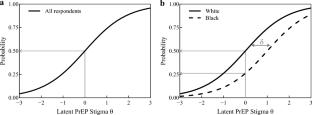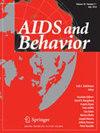Exploring Effects of Race and Differential Item Functioning on PrEP Stigma Experiences: Implications for Latent Stigma Measurement in Racially and Sexually Diverse Populations
Abstract
PrEP stigma measurement remains a challenge to the validity of studies and interventions addressing HIV prevention. It may lead to inaccurate assessment of the relationship between PrEP stigma and health outcomes such as PrEP persistence and care retention in groups experiencing HIV-related inequities. The present research explored the psychometric properties of a novel IV pre-exposure prophylaxis (PrEP) stigma scale in a cohort of racially diverse men who have sex with men (MSM). Using item response theory, analyses explored presence of differential item functioning (DIF) among Black and White respondents. Participants completed baseline surveys measuring psychosocial factors, sociodemographic factors, and PrEP stigma items. The primary analysis used a machine learning approach to assess (a) the presence of DIF; and (b) compare latent stigma between Black and White respondents, after correcting for any DIF. The model identified four out of 13 scale items as having a high probability of DIF for Black respondents, which is relatively good given that the original PrEP stigma scale was neither designed nor tested for validation comparing Black and White respondents. The DIF-adjusted latent PrEP stigma measure reveals statistically and substantially significantly higher levels of stigma for Black compared to White respondents (Diff.: 1.05 +/- 0.19). While most items performed well, findings demonstrate the importance of assessing measurement error in populations where stigma is rampant and being studied or intervened upon (and in this case, where multilevel and intersectional stigma may be present).


 求助内容:
求助内容: 应助结果提醒方式:
应助结果提醒方式:


